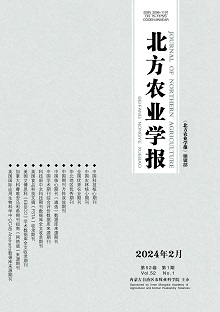Select
Screening and comprehensive evaluation of soybean varieties suitable for planting in the north foot of Yinshan Mountains
SUN Ying, WANG Fengwu, DAI Guixiang, ZHENG Chengzhong, MEI Xue, ZHANG Zizhen, WANG Qianjun, XU Zhenpeng, HUANG Wenjuan, YE Lu
Journal of Northern Agriculture
2023, 51 (3 ):
29-38.
DOI: 10.12190/j.issn.2096-1197.2023.03.04
【Objective】To screen soybean varieties with high yield,superior quality and strong resistance suitable for planting in the north foot of Yinshan Mountains.【Methods】Variety comparison experiment was conducted on 20 soybean varieties provided by the Institute of Hulun Buir Agricultural Science to analyze the yield and quality traits. Cluster analysis and principal component analysis were used to comprehensively evaluate different soybean varieties.【Results】Cluster analysis divided the 20 varieties into three categories. The first category(Mengdou 50,Dengke No. 5,Mengdou 49,Dengke No. 1,Mengdou 58,Mengdou 912,Mengdou 57,Mengdou 42,Mengdou 1137,Mengdou 43,and Mengdou 160) comprehensively displayed the characteristics of high yield and high fat content,that was,high yield and superior quality. The second category(Mengdou 53,Mengdou 54,Mengdou 343,Mengdou 46,Mengdou 48,Mengdou 15,Neidou No. 4) had low yield and moderate quality. The third category(Dongnong 690) had high yield and low fat content. Principal component analysis showed that the yield factor and grain factor had contribution rates of 45.298% and 41.496%,respectively. The effective pods per plant,total seeds per plant,yield per plant,plot yield,fat content,and 100-seed weight all had high contribution.【Conclusion】Based on the results of principal component comprehensive evaluation ranking and cluster analysis,combined with comprehensive factors such as variety growth period and resistance,eight soybean varieties with good comprehensive performance were selected,including Mengdou 50,Mengdou 43,Mengdou 1137,Dengke No. 5,Mengdou 42,Mengdou 58,Mengdou 49,and Dengke No. 1. These soybean varieties were suitable for demonstration and promotion planting in the north foot of Yinshan Mountains.
Reference |
Related Articles |
Metrics



